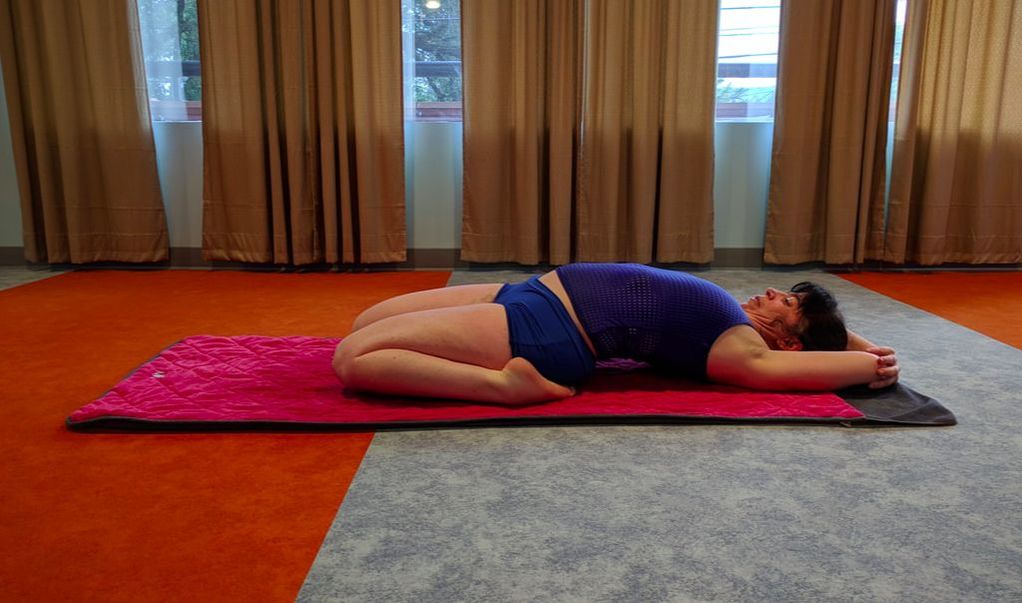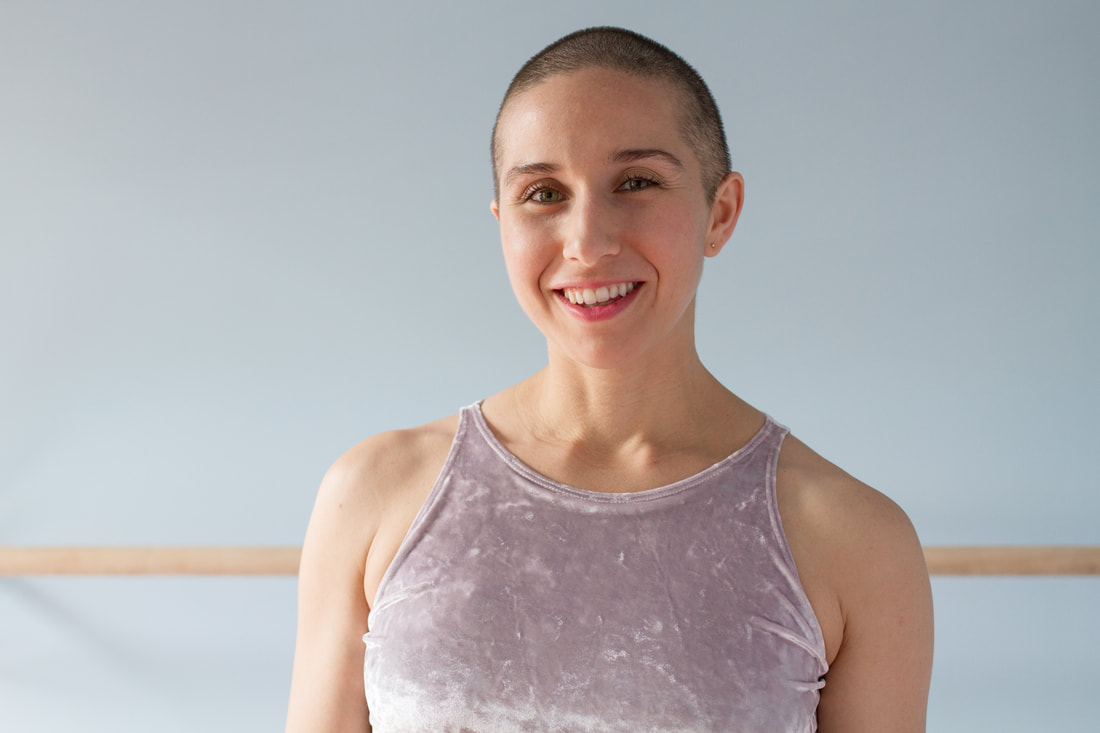Hearing Voices: Turn Off the Mind By Tuning in to Bikram Yoga (Special guest blog post by Ellen!)7/15/2018 “Didn’t you just eat too many cucumbers? You might get sick.” That’s what the voice in my head said as I was preparing to attend a recent class. The voice in my head is constantly trying to come up with reasons I should not attend Bikram Yoga class. It tells me I’m too busy, too tired, too stiff, or just plain not good enough to do yoga. Ironically, some of the reasons it gives me for not setting foot in the hot room are exactly the reasons I need to be in there as often as possible. Most days, pushing that voice away is the most important exercise I do, and it’s the one that requires the most strength. Yoga is slowly teaching me to ignore the voice in my head, and it is also teaching me how to listen.
Ideally, from the start of Pranayama Deep Breathing all the way through Kapalbhati in Vajrasana your body should be moving in perfect concert with the instructor’s voice. The instructions describe exactly how to perform each posture, down to the way you should breathe. I find that when I am able to connect perfectly with the teacher’s words my practice is very meditative. It doesn’t happen in every class, but those times are like magic. When I start confusing my right from my left hand in Eagle pose, or wishing I could stand on one leg as easily as some other student, I know that I am not aligned with the instructor. I know that I am not listening. In order to listen I have to tune out the voice in my head. I have to tune out the voice in my head because it interprets events through a lens of emotion. In his book, How Yoga Works, Geshe Michael Roach describes the mind this way: “We lose control of ourselves, even if we have some understanding, and the last thing we can do at that moment of emotion is to recall that it is actually our own minds making us see things the way we do.” (p. 124) And so, the real yoga is not found in Standing Head to Knee Pose or Fixed Firm Pose, or any of the poses. The real yoga is turning off your mind and listening within. Now, I wonder if there are any cucumbers left...? Ellen Cole is a Registered Nurse and has been practicing Bikram yoga at BYSJ since August of 2016. One of her favorite poses is Fixed Firm Pose and she loves doing "doubles" when she gets the chance. Read more of Ellen's yoga story here. Thanks for your contribution, Ellen!
0 Comments
Before I moved to Portland in June 2016, a friend in Albuquerque introduced me to hot yoga. It wasn’t Bikram yoga and I didn’t understand the postures, but I was determined to keep trying. When I got to Portland, I was pleased to find Bikram Yoga St. Johns in my neighborhood and, although I knew nothing about Bikram yoga, I bought a year membership.
I didn’t get my money’s worth that year. I didn’t attend class regularly, rarely drank enough water, and every pose was "awkward pose." Classes were hard because I would lose my balance and even fall sometimes. I would leave bewildered, embarrassed and dehydrated. But something kept me coming back, and I always felt welcomed with open arms no matter how long I had been away. This New Year's Eve, I came to the studio for a late night yoga class. I rang in the New Year with Kay, Orlo and the rest of the Bikram St. Johns family, under the blacklight with kombucha. I decided to do the 30-day challenge shortly after that. I came up with a yoga schedule that fit around my work schedule, and I set a goal to do 20 classes in 30 days. I loved seeing the stars by my name accumulate. I did 18 classes in 30 days and I began to see first-hand the benefits of regular Bikram practice: my balance and eye- hand coordination improved, my chronic back pain and stiffness lessened, and my mood improved. I've been practicing about 10-12 times a month ever since. I am a Registered Nurse and my job is demanding physically, mentally and emotionally. I also have scoliosis and a leg length difference. I could barely move my shoulder at one point. With regular practice I can now move my shoulder without pain. I didn’t think that was going to be possible. I didn’t think a lot of things were possible when first started my Bikram practice. I didn’t think I would ever get into Fixed Firm pose (check out my photo above!) or stand on one leg. Now Fixed Firm pose is a favorite of mine and I’m getting closer to Standing Head to Knee every day. I have conquered many challenges in my life and Bikram yoga is a very worthwhile challenge. And I’ve learned a lot about myself in the process. Once all major joints of the body have been warmed up by practicing Pranayama breathing and the first few postures, you are ready for Eagle pose, garudasana! This pose opens up the joints of the ankles, knees, hips, shoulders, elbows and wrists. By twisting your limbs "like ropes" Eagle pose creates compression of blood and lymph flow headed to spots like your legs, kidneys and the lymph nodes in your armpits. Hold the posture very still while breathing calmly, so that when you release it your elevated heart rate will send a boost of high-speed circulation to those areas. Notice a white mark on your thigh after you come out of Eagle? That's a good indicator that you’ve been maintaining a strong compression. What's that you say? Your arms won't twist like ropes? Here's a quick video on what to do for this (very common) "issue"... Now that we've cleared up what to do with those pesky arms, here are a couple key aspects of Eagle pose and more tips to help you get the most out of your efforts:
Using leverage to promote good alignment and open joints. When you move your knees to the right and upper body to the left to get your feet, knees, elbows and hands in one line, you are using the leverage of one limb against to create the compression effect I mentioned above and open up your major joints. The key to not falling over while you make these adjustment is keeping your (especially lower) abdominal muscles tight and your upper body lifted away from your thighs. It's a backbending pose! Many beginners tend to lean or even hunch their bodies forward while they're setting up their Eagle, in an effort to pull their elbows down. Don't let this happen to you! Keep your upper body (when you hear the cue "upper body" in class, think mainly lower ribs upward) leaning back throughout the posture, which means (although you'll end up looking straight ahead) your spine is actually in a backward bending position. This position strengthens back and core muscles, releases tension in your lumbar spine, and compresses the kidneys. Pro Tips:
|
AuthorHHY Founder, Yoga Business Coach, yoga-doer and life-lover, Kay Afif! Categories
All
|




 RSS Feed
RSS Feed
